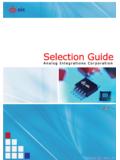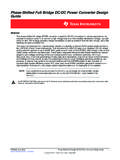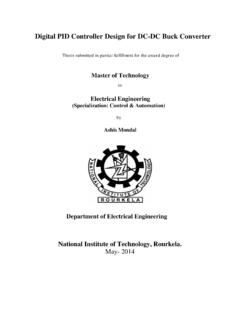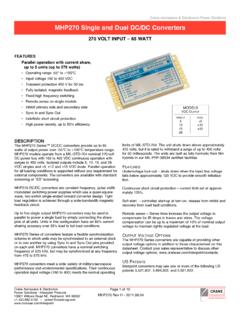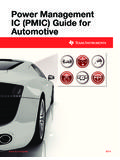Transcription of Technical Description/Installation manual …
1 Doc. No 1 (20) Technical Description/Installation manualSynchro/ stepper - NMEA converter S2N U/N 9028 CSW 99002 ver and later, including changes in ver ! This Technical Description is used also for bare board versions 9027C and 9033C without displays as well as for earlier SW versions, certain sections below are not applicable for this. 1 Brief DescriptionThe serial point-to-point communication method described in NMEA 0183 and its international companion standards IEC 61162-1 and -2 will be in use for long times to consequence of that is that there is a strong need for efficient ways to transfer data from other electrical interfaces, such as the widely used synchro transformer format to complex systems, like integrated bridge systems, VDR and synchro NMEA converter unit described here is intended to fulfil this requirement by using efficient circuitry to solve the required task default setting converts from standard synchro format (any common voltage, including 115/90 and 26 V 50-500 Hz)
2 To $HEHDT transmitted each second or from 1/6 from more unusual formats with different geared ratios can be done using the NMEA input for set-up/calibration and : +46 70 680 0115, Fax +46 70 239 17 62 Lax v gen 46, SE-128 44 Bagarmossen, SwedenE-mail: precaution!Although the unit is powered from nominal 24 V DC, the voltages for some gyro synchro and/or stepper formats may be higher than 48 V and care must be taken since these voltages may be shall only be done by qualified is no galvanic connection between input terminals R1-R2 and S1-S2-S3 and unit case or any other connections of the 2 (20) Doc. No 2 Block diagramR1R2S1S2S3 The power supply for the internal circuitry is isolated from the ship s power supply input, and the NMEA input for set-up/alignment (where needed) is main NMEA output, based on a RS485 driver circuit, is fully compliant with the IEC 61162-2 specification and powered from the power intake supply (isolated from the internal supply), which shall be connected only to fully isolated NMEA/IEC compliant inputs, resulting in full isolation of input and output in the event of an erroneous grounding of the main NMEA output (for instance to a non-isolated serial input), there is still no electric connection to the input circuitry and the internal electronics.
3 3 Technical data Mechanical dimensions, standard version82 Input signal conditioningA/D, CPU, Flash, RAM, UARTNMEA input (opto coupled)18-36 V DC inputRS485 driverIsolationIsolated power supplyLED displayPushbuttonsDimensions:Box (without mounting flanges and cable glands) 140 x 82 x 36 mm, flanges adds 15 mm on each side and can be mounted for panel mount (shown) or for bulkhead mount. Front panel mounting in 145 x 82 mm panel holes dia 6 mm (suggested bolt dia 5 mm), spaced 158 x 52 mm (w x h), centered and aligned with front No 3 (20) Mechanical dimensions, trunnion mounting kitAs an accessory for deckhead mount or for mounting on a flat surface, a trunnion mounting kir can be allows the unit to be mounted hanging from a deckhead or on top of a flat kit is supplied with an extra rear plate with mounting holes for cable glands as well as a set of three extra blind glands for non-used holes.
4 This makes it possible to bring cables out from the rear of the can also be delivered with both flange and trunnion mounting options. In these cases, the blind glands are mounted on the lower surface of the box and the cable glands in th rear panel, which however is mounted inside out to save space during shipping. Please refer to drawing below for bracket mounting details. Inputs synchro / stepper inputs S1-S2-S3, R1-R2 Phase voltages:90 V nominal. Minimum nominal voltage in 90 V setting 22 load:Appr 47 k symmetrical load to internal AGND, floating. Note! Open collector or similar stepper outputs requires external voltage and load. Internal jumper P13 can be used to connect internal AGND to input terminal voltage:10 to 120 V RMS ACReference frequency:Settings for 50/60 Hz, 400/500 Hz or 20/1000 HzGear ratio: synchro 1:1, synchro / stepper 1:36, 1:45, 1:90, 1:180 and 1:360 values settable using serial terminalt, proprietary NMEA set-up control or using internal key/display.
5 NMEA 0183/IEC 61162-1 set-up/alignment inputInput circuit:Fully NMEA 0183/IEC 61162-1 compliant, optically :Spring-loaded terminal block, accepting up to mm cable ends, marked NMEA IN A and NMEA IN B .Baud rate:4 800 b/s, 1200 to 57600 format:Proprietary $PQWE messages for set-up and alignment, simple menu driven text terminal mode with JP7 set, see set-up 4 (20) Doc. No NMEA 0183/IEC 61162-1 or -2 main outputOutput driver:Based on RS485 driver, with differential signalling using 0 and +5 V, fully compliant to IEC 61162-1/-2 standard. Output driver is powered from regulated DC input and should be connected to isolated NMEA 0183/IEC 61162-1 or -2 receivers. Output current:50 mA maximumConnections:Spring-loaded terminal block, accepting up to mm cable ends, marked NMEA OUT A , NMEA OUT B and NMEA OUT C.
6 Polarity: A connection idles negative referred to B . C terminal:This is included for full IEC 61162-2 compliance, intended for inner screen or separate grounding wire and is internally connected to ground voltage of output driver. Common installation practice for standard NMEA 4 800 b/s operation is to use shielded, twisted pair cable and to connect shield in transmitting end rate:4 800 b/s, 1200 to 57600 formats:Standard $HEHDT with one decimal, transmitted at 1 Hz, which is appropriate for VDR/AIS installations. New THD (expected in next version of standard) or HDM sentence formatters, talker identifiers and transmission frequency and averaging properties can be tailored to suit any situation, see set-up section for of turn: ROT rate of turn can be extracted from heading information, see set-up formats:Special functions, such as angle to speed or conversion form angular value to any other required serial format can be done on :As a part of set-up procedure, proprietary $PQWE messages are being transmitted, see set-up section.
7 Performance synchro operationInaccuracy:Better than , jitter using 1:1 synchro input and operating at phase voltages down to 50% of nominal resolution in 360:1 system down to Update rate:1 Hz default, 2, 5, 10, 20, 30, 40 or 50 Hz as required. stepper operationInaccuracy:As defined by stepper rate:1 Hz default, 2, 5, 10, 20, 30 or 40 Hz as rate:At least 120 steps/second for DC step 20 V and above. Restricted tracking rate for DC step down to TTL level and for rectified AC operation. Keys, indicators , jumpersKeys: Set , Exit , Dim/ + and Dim/ - keys for alignment, setup and display dimming, all with backlit text. Pressing Dim/ + and Dim/ - keys simultaneously tests all LED indicators:Five seven-segment LED indicators for display of :Four jumpers, P6, P7, P8 and P13 are available.
8 Power supplyPower requirement:18 36 V DC, less than 2 W power consumption. Note! Operates typically down to less than 10 V, but this is not guaranteed. Operation on V DC or 9-18 V DC or AC on :Internal circuitry is powered using an internal isolated DC/DC converter, main NMEA output driver is powered by 5 V DC, down-regulated from DC input. Pads on mounting screw holes or internal ground plane are not connected to DC No 5 (20) Environmental/Type approvalsRequirements:Compliant with environmental requirements as defined by IEC 60945. Gyro conversion performance is in compliance with IMO performance standards for gyro approvals:BSH/6161/001/2004, see section 10 for marked according to EMC directive, see sec 9 for declaration of reports are available on request. DisclaimerAll data in this specification are preliminary and may change without prior unit may, as any other electronic device, malfunction due to internal hardware or software failure or due to input signal, configuration, set-up or compatibility problems.
9 If the output from the unit is connected to other systems, these should be operated in such a way that such alfunction can be detected and corrected, avoiding damage or danger. Qwerty-elektronik will not in any case assume any responsibility for any direct or indirect malfunction for the reasons mentioned, other than replacing units under explicitly agreed guarantee conditions. Qwerty-elektronik will also not take any responsibility for any damage or injury caused by electric voltages fed from other equipment, such as gyro compasses. 4 installation and set-up (Note: terminal numbering is S3 S2 S1 R2 R1 etc)Note! Some gyro voltages may be hazardous and the cover plate of the unit shall only be opened by qualified personnel. No such voltages are accessible outside the unit. Gyro output formats and connection to signalsNote!
10 EMC compliance using the boxed version 9028C requires all connection to be made using shielded cables only. Please note that the cable glands are designed to connect to the cable screen. To make this connection, remove the outer insulation of the cable and trim the exposed shield to be some 5 mm in length, then push it down over the outer insulation and push the shield until it connects to the contact bare board versions 9027B, 9027C and 9033C, responsibility for EMC requirements compliance has to be solved by external mounting/ installation /shielding. synchro brief descriptionThe diagram shows the amplitude variations as a function of the - S3S2 - S1S3 - S2 Heading, degrees123456789111133155177199221243265 287309331353page 6 (20) Doc. No In the synchro transformer format, the angular value is transmitted using a rotating transformer with three windings, spaced 120.

